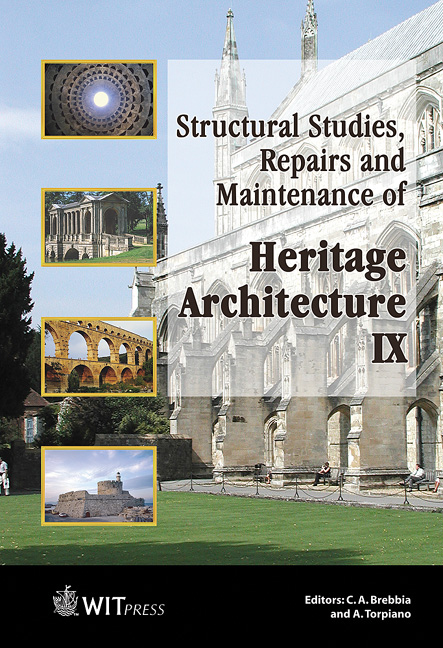Dynamic Identification And Model Updating Of The Howa Brick Chimney, Tokoname, Japan
Price
Free (open access)
Transaction
Volume
83
Pages
11
Published
2005
Size
650 kb
Paper DOI
10.2495/STR050261
Copyright
WIT Press
Author(s)
T. Aoki, D. Sabia, D. Rivella & H. Muto
Abstract
This study deals with dynamic identification and model updating of the Howa brick chimney to preserve brick chimneys in Tokoname. From the results of dynamic tests, the fundamental frequencies of the Howa brick chimney are estimated to be about 3.06 Hz and 2.69 Hz in north-south and east-west directions respectively. The natural modes and damping factors are identified by ARMAV (Autoregressive Moving Average) and ERA (Eigensystem Realization Algorithm) models. As for Model Updating of the Howa brick chimney, IEM (Inverse Eigensensitivity Method) is applied. From the results of model updating, damaged areas are identified and these correspond well to the broken position of static collapse test. Keywords: brick chimney, dynamic test, dynamic identification, ARMAV, ERA, IEM, model updating. 1 Introduction Tokoname has long been noted for its production of ceramic ware, and its history dates back to nearly 1,000 years ago. Tokoname is one of the nation’s six oldest ceramic producing districts \“Rokkoyo”. And Tokoname is said to be the oldest and largest kiln site of them all. On the offshore waters of Tokoname City, the Central Japan International Airport is opened on 17 February 2005 [1]. Until the first half of the Showa period, there were over 300 chimneys in Tokoname. Some of them were destroyed by typhoon and/or earthquake. Unfortunately, according to the vulnerability for typhoon and/or earthquake,
Keywords
brick chimney, dynamic test, dynamic identification, ARMAV, ERA, IEM, model updating.




